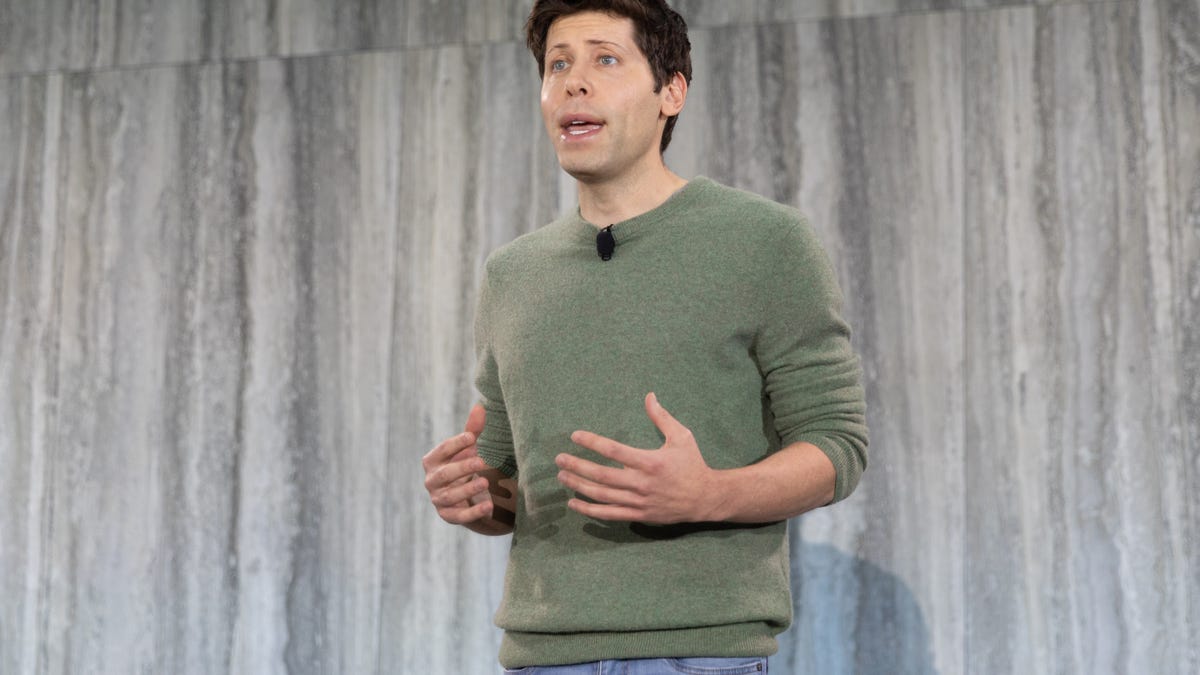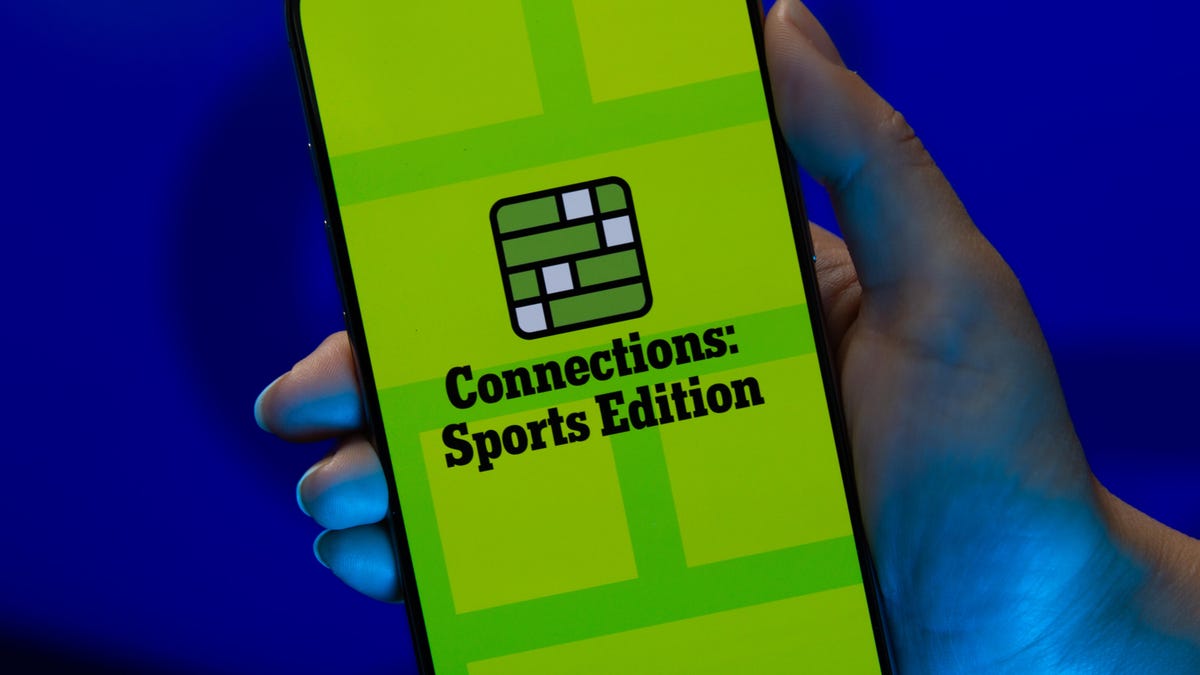Technologies
AI Gets Smarter, Safer, More Visual With GPT-4 Release, OpenAI Says
ChatGPT Plus subscribers can try it out now.

The hottest AI technology foundation, OpenAI’s GPT, got a big upgrade Tuesday that’s now available in the premium version of the ChatGPT chatbot.
The new GPT-4 can generate much longer strings of text and respond when people feed it images, and it’s designed to do a better job avoiding artificial intelligence pitfalls visible in the earlier GPT-3.5, OpenAI said Tuesday. For example, when taking bar exams that attorneys must pass to practice law, GPT-4 ranks in the top 10% of scores compared to the bottom 10% for GPT-3.5, the AI research company said.
GPT stands for Generative Pretrained Transformer, a reference to the fact that it can generate text on its own and that it uses an AI technology called transformers that Google pioneered. It’s a type of AI called a large language model, or LLM, that’s trained on vast swaths of data harvested from the internet, learning mathematically to spot patterns and reproduce styles.
OpenAI has made its GPT technology available to developers for years, but ChatGPT, which debuted in November, offered an easy interface that yielded an explosion of interest, experimentation and worry about the downsides of the technology. ChatGPT is free, but it falter when demand is high. In January, OpenAI began offering ChatGPT Plus for $20 per month with assured availability and, now, the GPT-4 foundation.
GPT-4 advancements
«In a casual conversation, the distinction between GPT-3.5 and GPT-4 can be subtle. The difference comes out when the complexity of the task reaches a sufficient threshold,» OpenAI said. «GPT-4 is more reliable, creative and able to handle much more nuanced instructions than GPT-3.5.»
Another major advance in GPT-4 is the ability to accept input data that includes text and photos. OpenAI’s example is asking the chatbot to explain a joke showing a bulky decades-old computer cable plugged into a modern iPhone’s tiny Lightning port.
Another is better performance avoiding AI problems like hallucinations — incorrectly fabricated responses, often offered with just as much seeming authority as answers the AI gets right. GPT-4 also is better at thwarting attempts to get it to say the wrong thing: «GPT-4 scores 40% higher than our latest GPT-3.5 on our internal adversarial factuality evaluations,» OpenAI said.
GPT-4 also adds new «steerability» options. Users of large language models today often must engage in elaborate «prompt engineering,» learning how to embed specific cues in their prompts to get the right sort of responses. GPT-4 adds a system command option that lets users set a specific tone or style, for example programming code or a Socratic tutor: «You are a tutor that always responds in the Socratic style. You never give the student the answer, but always try to ask just the right question to help them learn to think for themselves.»
«Stochastic parrots» and other problems
OpenAI acknowledges significant shortcomings that persist with GPT-4, though it also touts progress avoiding them.
«It can sometimes make simple reasoning errors … or be overly gullible in accepting obvious false statements from a user. And sometimes it can fail at hard problems the same way humans do, such as introducing security vulnerabilities into code it produces,» OpenAI said. In addition, «GPT-4 can also be confidently wrong in its predictions, not taking care to double-check work when it’s likely to make a mistake.»
Large language models can deliver impressive results, seeming to understand huge amounts of subject matter and to converse in human-sounding if somewhat stilted language. Fundamentally, though, LLM AIs don’t really know anything. They’re just able to string words together in statistically very refined ways.
This statistical but fundamentally somewhat hollow approach to knowledge led researchers, including former Google AI researchers Emily Bender and Timnit Gebru, to warn of the «dangers of stochastic parrots» that come with large language models. Language model AIs tend to encode biases, stereotypes and negative sentiment present in training data, and researchers and other people using these models tend «to mistake … performance gains for actual natural language understanding.»
OpenAI, Microsoft and Nvidia partnership
OpenAI got a big boost when Microsoft said in February it’s using GPT technology in its Bing search engine, including a chat features similar to ChatGPT. On Tuesday, Microsoft said it’s using GPT-4 for the Bing work. Together, OpenAI and Microsoft pose a major search threat to Google, but Google has its own large language model technology too, including a chatbot called Bard that Google is testing privately.
Microsoft uses GPT technology both to evaluate the searches people type into Bing and, in some cases, to offer more elaborate, conversational responses. The results can be much more informative than those of earlier search engines, but the more conversational interface that can be invoked as an option has had problems that make it look unhinged.
To train GPT, OpenAI used Microsoft’s Azure cloud computing service, including thousands of Nvidia’s A100 graphics processing units, or GPUs, yoked together. Azure now can use Nvidia’s new H100 processors, which include specific circuitry to accelerate AI transformer calculations.
Technologies
You Can Watch an Exclusive Avatar: Fire and Ash Scene on TikTok Right Now
Disney and TikTok partner on an immersive content hub for James Cameron’s latest movie about the alien Na’vi.
If you’re not quite ready to head to the theater to watch Avatar: Fire and Ash, an exclusive scene preview might sell you on the visual spectacle. As part of a new collaboration with the social media giant, Disney is posting snippets of its new movie to its TikTok account.
This scene isn’t part of any trailer and won’t be posted to other social media accounts, making TikTok the only place you can view it — unless you buy a movie ticket. A first look at the new movie’s scenes isn’t the only Avatar-related bonus on the social media platform right now, either. TikTok has partnered with the house of mouse to bring an entire «immersive content hub» to the app.
A special section of TikTok includes quizzes and educational videos that explore the alien world of Pandora shown off in the movies. On TikTok, you can take a personality quiz to find out what Na’vi clan you most closely align with and unlock a special profile picture border to use on your account.
Science and fiction blend together with a series of videos from real doctors who explain the basis for some of Avatar’s world-building. If you want to learn about exoplanets or how realistic the anatomy of the movie’s alien animals is, these videos will feed your brain while still providing entertainment value.
Perhaps the most enticing part of Disney’s latest social media collaboration is the opportunity for fans to win prizes and trips. TikTok creators who make edits with the #TikTokAvatarContest hashtag are entered into a competition to win Avatar merchandise. The biggest winners will be able to take a trip to visual effects studio Wētā Workshop in New Zealand or visit Avatar director James Cameron’s Lightstorm Entertainment Studio in Los Angeles.
Avatar: Fire and Ash is the third installment in director Cameron’s cinematic passion project. While the first Avatar movie was released in 2009, Cameron didn’t release another entry in the franchise until 2022. In total, there is a five-movie arc planned for the indigo alien Na’vi on the moon of Pandora.
The Avatar movies are known for pushing the boundaries of CGI visual effects in cinema. They are also historically big winners at the box office: the original Avatar is the highest-grossing film of all time, earning $2.9 billion across its theatrical releases. Its sequel, Avatar: The Way of Water, is the third-highest-grossing film of all time, trailing Avengers: Endgame. You can stream those movies on Disney Plus.
It remains to be seen whether Avatar: Fire and Ash will financially live up to its predecessors. The film currently has mixed reviews from critics on Rotten Tomatoes.
Technologies
Brain-Inspired Algorithms Could Dramatically Cut AI Energy Use
A new study dives into a major redesign for AI architecture.

One major issue facing artificial intelligence is the interaction between a computer’s memory and its processing capabilities. When an algorithm is in operation, data flows rapidly between these two components. However, AI models rely on a vast amount of data, which creates a bottleneck.
A new study, published on Monday in the journal Frontiers in Science by Purdue University and the Georgia Institute of Technology, suggests a novel approach to building computer architecture for AI models using brain-inspired algorithms. The researchers say that creating algorithms in this manner could reduce the energy costs associated with AI models.
«Language processing models have grown 5,000-fold in size over the last four years,» Kaushik Roy, a Purdue University computer engineering professor and the study’s lead author, said in a statement. «This alarmingly rapid expansion makes it crucial that AI is as efficient as possible. That means fundamentally rethinking how computers are designed.»
Don’t miss any of our unbiased tech content and lab-based reviews. Add CNET as a preferred Google source. Don’t miss any of our unbiased tech content and lab-based reviews. Add CNET as a preferred Google source.
Most computers today are modeled on an idea from 1945 called the von Neumann architecture, which separates processing and memory. This is where the slowdown occurs. As more people around the world utilize data-hungry AI models, the distinction between a computer’s processing and memory capacity could become a more significant issue.
Researchers at IBM called out this problem in a post earlier this year. The issue computer engineers are running up against is called the ‘memory wall.’
Breaking the memory wall
The memory wall refers to the disparity between memory and processing capabilities. Essentially, computer memory is struggling to keep up with processing speeds. This isn’t a new issue. A pair of researchers from the University of Virginia coined the term back in the 1990s.
But now that AI is prevalent, the memory wall issue is sucking up time and energy in the underlying computers that make AI models work. The paper’s researchers argue that we could try a new computer architecture that integrates memory and processing.
Inspired by how our brains function, the AI algorithms referred to in the paper are known as spiking neural networks. A common criticism of these algorithms in the past is that they can be slow and inaccurate. However, some computer scientists argue that these algorithms have shown significant improvement over the last few years.
The researchers suggest that AI models should utilize a concept related to SNNs, known as compute-in-memory. This concept is still relatively new in the field of AI.
«CIM offers a promising solution to the memory wall problem by integrating computing capabilities directly into the memory system,» the authors write in the paper’s abstract.
Medical devices, transportation, and drones are a few areas where researchers believe improvements could be made if computer processing and memory were integrated into a single system.
«AI is one of the most transformative technologies of the 21st century. However, to move it out of data centers and into the real world, we need to dramatically reduce its energy use,» Tanvi Sharma, co-author and researcher at Purdue University, said in a statement.
«With less data transfer and more efficient processing, AI can fit into small, affordable devices with batteries that last longer,» Sharma said.
Technologies
Today’s NYT Connections: Sports Edition Hints and Answers for Dec. 17, #450
Here are hints and the answers for the NYT Connections: Sports Edition puzzle for Dec. 17, No. 450.

Looking for the most recent regular Connections answers? Click here for today’s Connections hints, as well as our daily answers and hints for The New York Times Mini Crossword, Wordle and Strands puzzles.
Today’s Connections: Sports Edition is pretty challenging. How well do you know French soccer? If you’re struggling with today’s puzzle but still want to solve it, read on for hints and the answers.
Connections: Sports Edition is published by The Athletic, the subscription-based sports journalism site owned by The Times. It doesn’t appear in the NYT Games app, but it does in The Athletic’s own app. Or you can play it for free online.
Read more: NYT Connections: Sports Edition Puzzle Comes Out of Beta
Hints for today’s Connections: Sports Edition groups
Here are four hints for the groupings in today’s Connections: Sports Edition puzzle, ranked from the easiest yellow group to the tough (and sometimes bizarre) purple group.
Yellow group hint: Put it on your noggin.
Green group hint: Goes before a division of the year.
Blue group hint: French football.
Purple group hint: Think Louisville Slugger.
Answers for today’s Connections: Sports Edition groups
Yellow group: Headgear.
Green group: Prefixes to -season.
Blue group: Ligue 1 teams.
Purple group: Batting ____.
Read more: Wordle Cheat Sheet: Here Are the Most Popular Letters Used in English Words
What are today’s Connections: Sports Edition answers?
The yellow words in today’s Connections
The theme is headgear. The four answers are cap, hat, mask and visor.
The green words in today’s Connections
The theme is prefixes to -season. The four answers are mid, off, post and pre.
The blue words in today’s Connections
The theme is Ligue 1 teams. The four answers are Lens, Marseille, Nice and PSG.
The purple words in today’s Connections
The theme is batting ____. The four answers are average, gloves, practice and stance.
Don’t miss any of our unbiased tech content and lab-based reviews. Add CNET as a preferred Google source.
-

 Technologies3 года ago
Technologies3 года agoTech Companies Need to Be Held Accountable for Security, Experts Say
-

 Technologies3 года ago
Technologies3 года agoBest Handheld Game Console in 2023
-

 Technologies3 года ago
Technologies3 года agoTighten Up Your VR Game With the Best Head Straps for Quest 2
-

 Technologies4 года ago
Technologies4 года agoBlack Friday 2021: The best deals on TVs, headphones, kitchenware, and more
-

 Technologies4 года ago
Technologies4 года agoVerum, Wickr and Threema: next generation secured messengers
-

 Technologies4 года ago
Technologies4 года agoGoogle to require vaccinations as Silicon Valley rethinks return-to-office policies
-

 Technologies4 года ago
Technologies4 года agoOlivia Harlan Dekker for Verum Messenger
-

 Technologies4 года ago
Technologies4 года agoiPhone 13 event: How to watch Apple’s big announcement tomorrow
